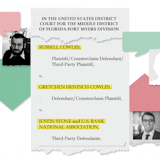A $2 million proposal pitched by a group of civic leaders to study a 15-minute hyperloop vacuum tunnel between the Twin Cities and Rochester has failed to win the support of a key Metropolitan Council committee.
Donna Koren, the proposal’s project lead for Global Wellness Connections,, said the Edina-based nonprofit group was disappointed its funding proposal failed to gain traction with the regional planning body.
The idea involves whisking passengers at 700 mph from Minneapolis-St. Paul International Airport to Rochester, home of Mayo Clinic. But to date there are no hyperloops in use as a form of public transportation anywhere in the world, despite being hyped a decade ago by entrepreneur Elon Musk.
“A carbon-neutral hyperloop route itself would meet the Met Council’s stated objectives for multimodal transportation, benefits to communities, and environmental sustainability,” Koren said in an email. “The technical and economic feasibility study would quantify these benefits, and assess any risks.”
The group was looking to tap federal funds that funnel through the Met Council’s Transportation Advisory Board (TAB), which vets such requests using a points-based scoring system. The study itself was projected to cost $2.5 million.
The TAB, which consists of 34 elected officials and residents, will distribute more than $280 million in mostly federal funds this year.
Most of the money parsed by the committee pays for tangible transportation projects, including roads, connections to public transit, and bike and pedestrian paths that are intended to improve mobility and safety, manage congestion and improve air quality.
The hyperloop request was made under the committee’s “Unique Projects” category, which makes up a small piece of the funding pie. The study received a score of 302 out of 900 possible points.


